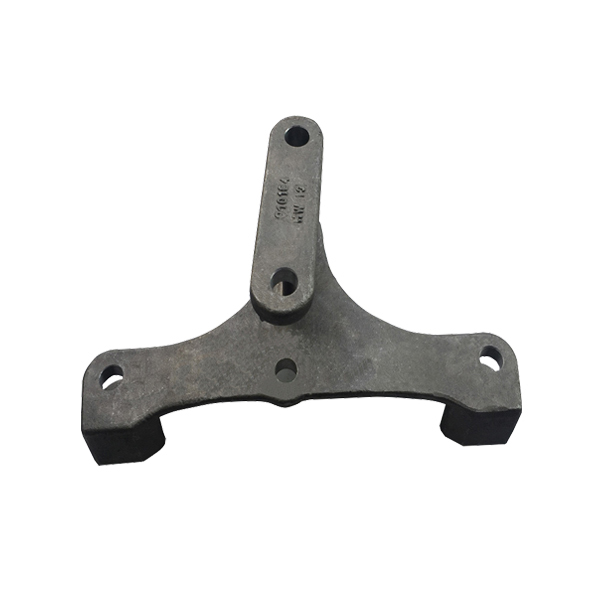

1. Handling of Molten Steel: Workers must wear heat-resistant gloves and a face shield when handling molten steel. The pouring area should be marked with paint or tape to warn others of the danger.
2. Ventilation: The casting area should be well-ventilated to prevent the buildup of harmful fumes. The use of a fume hood or exhaust fan is recommended.
3. Personal Protective Equipment (PPE): Workers should wear PPE, including goggles, gloves, and a face mask, to protect against dust, smoke, and other contaminants.
4. Equipment Maintenance: All equipment should be regularly inspected and maintained to ensure safe and efficient operation. Any damaged or worn equipment should be replaced immediately.
5. Emergency Procedures: Workers should be trained on emergency procedures, such as how to put out fires and evacuate the area in case of an emergency.
Steel Lost Foam Casting offers numerous benefits over traditional casting methods. It allows for the creation of complex, near-net-shape parts with a high degree of accuracy and repeatability. It also has lower tooling costs, reduced material waste, and shorter lead times than other casting methods. Overall, Steel Lost Foam Casting is a cost-effective and efficient way to produce high-quality steel parts.
Steel Lost Foam Casting is used in a variety of industries, including automotive, aerospace, construction, and agriculture. It is particularly well-suited for parts with complex geometries, such as engine blocks, cylinder heads, and intake manifolds.
As new materials and technologies emerge, Steel Lost Foam Casting will continue to evolve and improve. One area of focus is the development of new foam materials that can withstand higher temperatures and pressures. Another area is the use of simulation software to optimize the casting process and ensure quality parts.
In conclusion, Steel Lost Foam Casting is an important casting process that offers numerous benefits over traditional methods. However, safety precautions must be taken to protect workers and ensure quality parts. As new technologies emerge, Steel Lost Foam Casting will continue to improve and remain a cost-effective and efficient way to produce high-quality steel parts.
Ningbo Yinzhou Keming Machinery Manufacturing Co., Ltd. is a leading provider of Steel Lost Foam Casting solutions. We have more than 20 years of experience in the industry and are committed to providing our customers with the highest quality parts and services. Contact us today at sale@nbkeming.com to learn more about our products and services.
References:
1. Kuo, M. K., & Ting, J. M. (2006). Development of a direct lost foam casting process for high-precision steel castings. Journal of materials processing technology, 176(1-3), 189-196.
2. Lee, S. H., & Kim, Y. G. (2010). Casting simulation of lost foam casting process for engine block casting. Journal of materials processing technology, 210(13), 1725-1733.
3. Xu, H., Zhang, L., Liu, D., & Zhang, Q. (2014). Numerical simulation of lost foam casting process for complicated steel casting. Journal of materials processing technology, 214(4), 905-915.
4. Zhang, L., & Wang, G. (2019). Lost Foam Casting: Process, Materials, and Applications. Nova Science Publishers.
5. Yuan, G., Ding, H., & Li, J. (2020). Numerical simulation and optimization of lost foam casting of high-precision impellers. International Journal of Advanced Manufacturing Technology, 106(9-10), 4297-4305.
6. Zhao, Y., Li, J., & Zhang, Y. (2021). Lost Foam Casting of Large-Scale and Complicated Castings. Journal of Manufacturing Science and Engineering, 143(3), 030907.
7. Kim, I. H., Lee, J. H., & Han, J. (2017). Casting of high-performance steel using the lost foam process. Acta Materialia, 140, 299-309.
8. Hirt, G., & Antrekowitsch, J. (2007). Cast iron and steel lost foam castings produced in sequential injections technology. Journal of Materials Science, 42(8), 2887-2893.
9. Zhang, X., Li, X., Li, J., & Yao, X. (2021). Optimization design of lost foam casting technology for large-scale steel castings based on multi-objective optimization algorithm. Journal of Materials Engineering and Performance, 30(1), 313-324.
10. Kong, L., & Zhao, J. (2019). Numerical simulation and experimental verification of gating system optimization in lost foam casting of steel castings. International Journal of Advanced Manufacturing Technology, 103(1-4), 425-431.